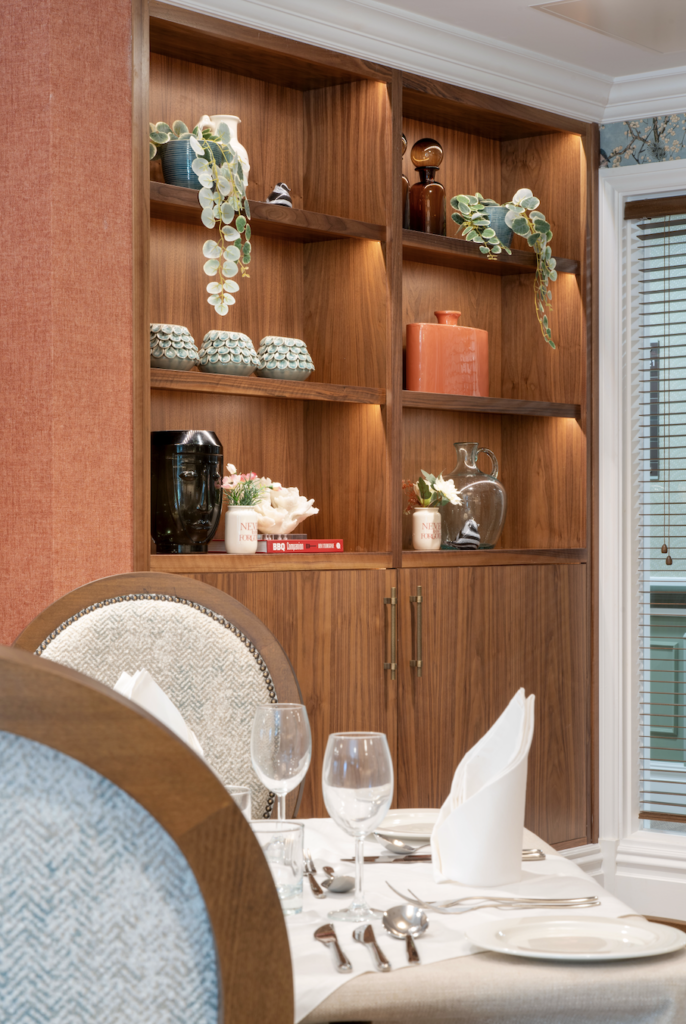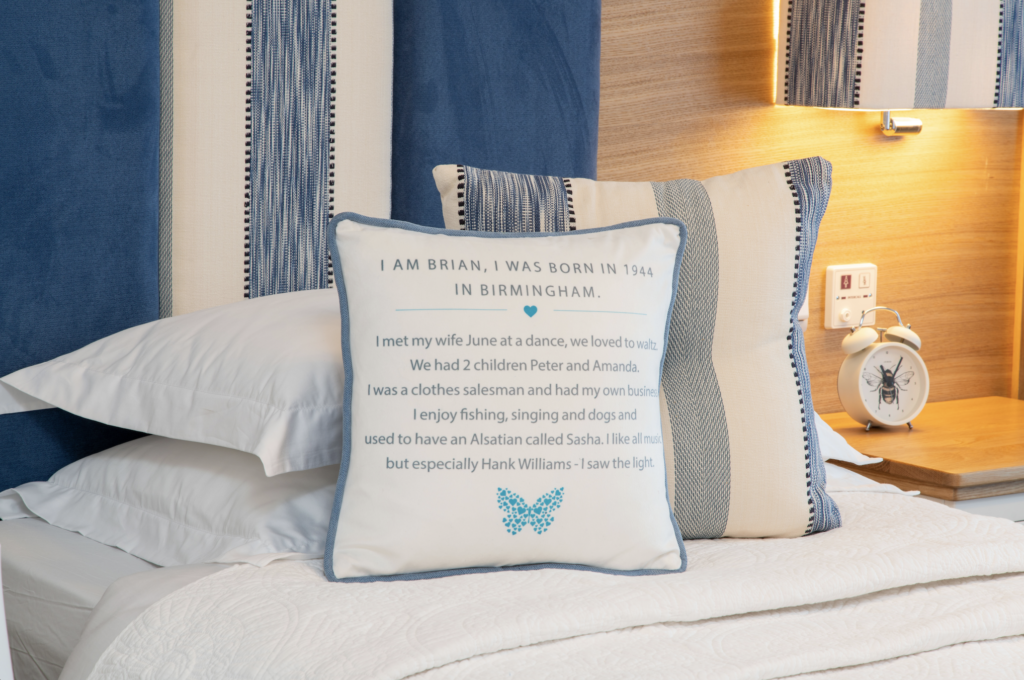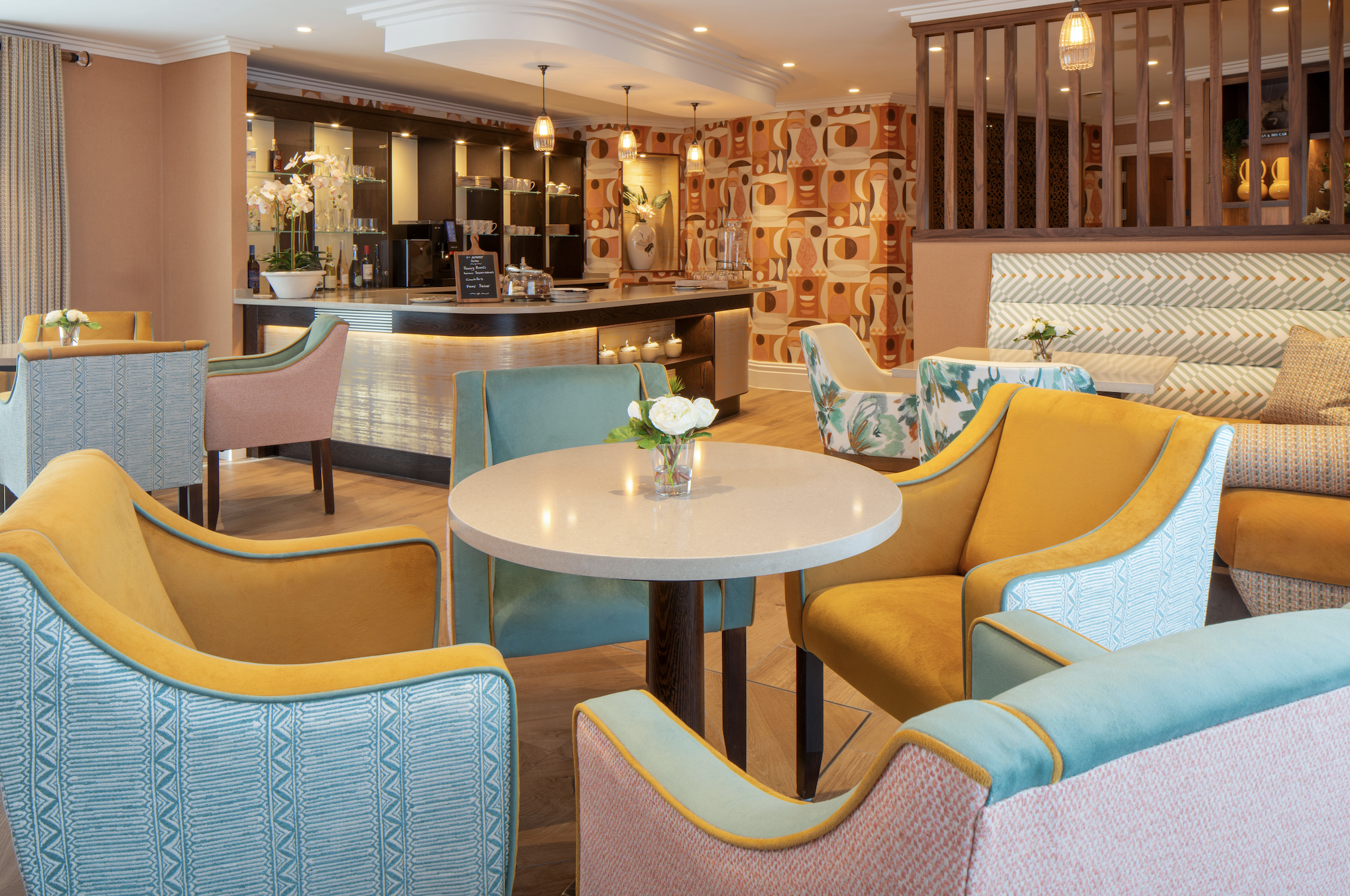The Care Home Interiors Co. (part of The Care Home Group) has become a pioneer in dementia interior design.Using first-hand experience, coupled with best practice dementia advice the company strives to create comfortable environments for those living with dementia. In this article they share with you their budget friendly blueprint for success. To create a dementia-friendly environment, you must first understand the unique needs of each individual living with dementia. The complication is that dementia is individual, so there really isn’t a one-fit all solution. However, a dementia-friendly design focuses on accessibility, familiarity, comfort, and safety. These elements can alleviate confusion, anxiety, and agitation associated with dementia.Think of the FACS – without the ‘T’.Familiarity: Familiar environments can help reduce disorientation. Using homely designs with recognisable items can trigger positive memories, promoting a sense of belonging e.g. A lounge generally has a fireplace and TV as focal points. Multi-purpose rooms are a departure from the traditional home layout and can be extremely confusing.Accessibility: An accessible environment makes navigation easy for individuals with cognitive impairment. For instance, clear sightlines and proper signage can help residents identify and reach different areas without confusion. E.g. Bus stop type signs for toilets or any other sign that really emphasises the fact it’s a toilet is incredibly helpful. One of biggest anxieties people living with dementia can have is how to access the toilet. Providing clear and obvious direction to a toilet alleviates anxiety but also aids in maintaining a level of independence they would otherwise not have. Comfort: Comfortable environments minimise stress and encourage relaxation. Soothing colour palettes, comfortable furniture, soft lighting and tactile fabrics and objects provide sensory feedback contributing to an overall calming ambiance. Take advantage of natural light. Natural light not only enhances mood but also helps maintain the circadian rhythm, reducing 'sundowning' symptoms common in dementia patients.

Safety: Safety is paramount in dementia care. Designs should limit fall risks, secure potentially dangerous items, and ensure residents can be easily monitored. By reducing potential hazards and sources of confusion, such as reflective surfaces or misleading patterns, individuals are less likely to hesitate or become disoriented when moving about the space. Improved mobility not only enhances their quality of life but also reduces the physical strain on caregivers.Designing for dementia goes beyond clinical utility. It’s about weaving comfort into the fabric of living spaces, where each element is chosen not just for its functionality but for its ability to provide solace and familiarity to both residents and caregivers. The goal is to create a haven that feels like home, tailored to comfort, safety, and personal tastes.By employing certain design principles, the overall atmosphere becomes more soothing and calming. This, in turn, can contribute to a more peaceful and harmonious living environment for everyone involved.Of course, sometimes it is just easier to speak to the experts. Feel free to contact The Care Home Interiors Company, and speak to Kerry directly about your design challenges and the potential solutions available to you on info@carehome-interiors.co.uk





